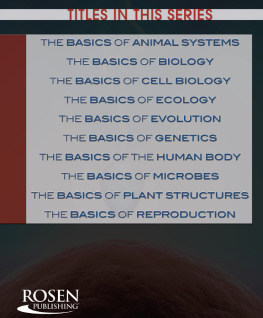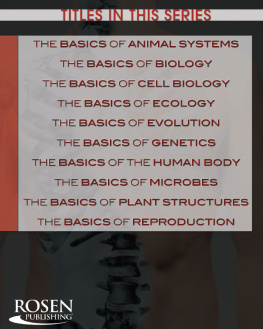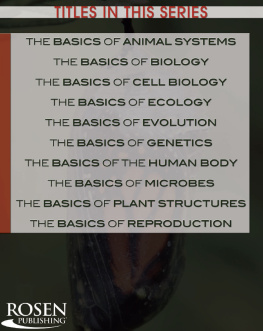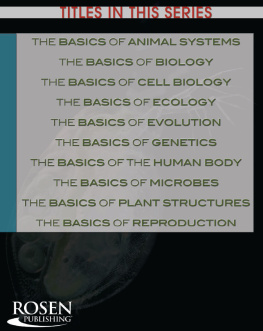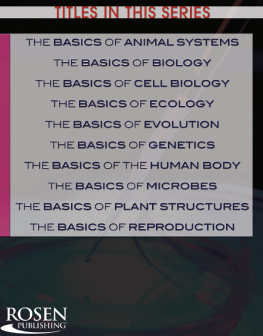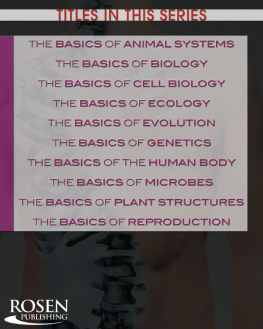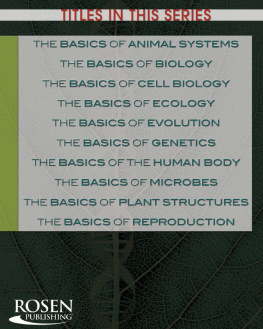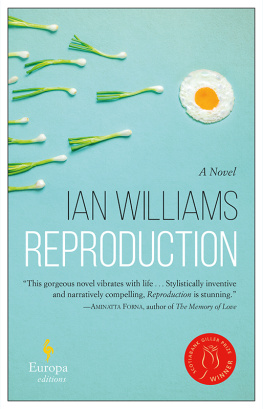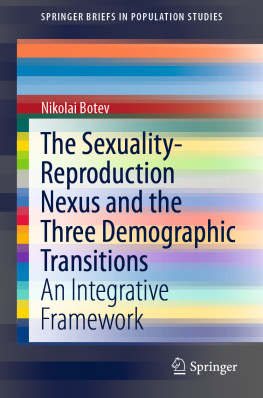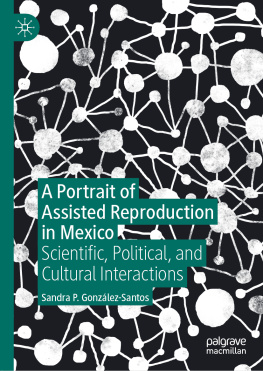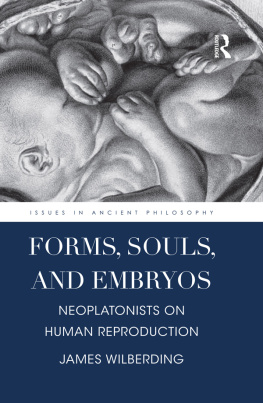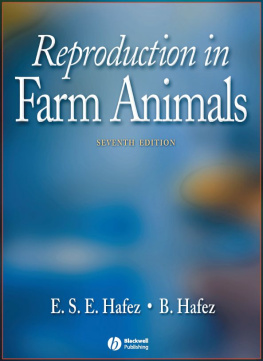This edition published in 2014 by:
The Rosen Publishing Group, Inc.
29 East 21st Street
New York, NY 10010
Additional end matter copyright 2014 by The Rosen Publishing Group, Inc.
All rights reserved. No part of this book may be reproduced in any form without permission in writing from the publisher, except by a reviewer.
Library of Congress Cataloging-in-Publication Data
Wanjie, Anne.
The basics of reproduction/Anne Wanjie.1st ed.New York:
Rosen, 2014
p. cm.(Core concepts)
Includes bibliographical references and index.
ISBN 978-1-4777-0549-0
1. ReproductionJuvenile literature. 2. Reproduction. I. Title.
QP251.5 .W36 2014
591.16
Manufactured in the United States of America
CPSIA Compliance Information: Batch #S13YA: For further information, contact Rosen Publishing, New York, New York, at 1-800-237-9932.
2004 Brown Bear Books Ltd.
CONTENTS
CHAPTER 1: AN INTRODUCTION TO REPRODUCTION
CHAPTER 2: WHAT IS ASEXUAL REPRODUCTION?
CHAPTER 3: UNDERSTANDING SEXUAL REPRODUCTION
CHAPTER 4: CYCLES OF LIFE
CHAPTER 5: REPRODUCTION IN HUMANS
CHAPTER 6: HOW PEOPLE DEVELOP
CHAPTER 7: THE AGING PROCESS
CHAPTER 8: BIOGRAPHY: BARBARA MCCLINTOCK
GLOSSARY
FOR MORE INFORMATION
FOR FURTHER READING
INDEX
CHAPTER ONE
AN INTRODUCTION TO REPRODUCTION
All living things reproduce by having young, or offspring. All individuals will die sooner or later, from disease, accident, predation, or environmental change. So, species can only survive if members reproduce (have young).
T he ways animals produce young are as diverse as Earths life forms themselves: Some creatures lay eggs, and others give birth to live young; some species have males and females, while other species do not; some animals can change from male to female or vice versa, while other life forms, such as bacteria, simply divide in two. Despite these differences, all methods of reproduction can be divided into two types: sexual and asexual.
Sexual reproduction involves the fusion of a male and female sex cell (a sperm and an egg). This is fertilization. A fertilized egg grows into a new individual. Since each sex cell carries half of the moms or dads genes, new individuals have their own unique combinations of genes. This creates genetic (inherited) variety. Humans reproduce sexually. Asexual reproduction creates offspring that are genetically identical to their parentthey all have exactly the same genes.
Animals breed in surprising ways. This male parrotfish was once female. When male parrotfish are in short supply, a female changes sex, and the fish can continue to breed.
THE SCIENTIFIC STUDY OF REPRODUCTION
The scientific study of reproduction draws together many areas of biology. Genetics and cell biology explain what occurs at the microscopic level. Reproductive physiology investigates how the bodys reproductive systems work. Theories of reproduction are important in evolutionary biology, which traces how life forms arose and evolved (changed over long periods time). An understanding of reproduction is also important for agriculture and medicine. The study of reproduction and growth raises many questions. Some of them we now have answers to, but others are still a mystery. For example, the processes of fertilization and of how sex hormones work are now basically understood, but other details are still to be figured out. For instance, although new facts about aging have been uncovered, a great deal remains unknown.
PREVENTING PLANT EXTINCTION
Many plants are in danger of extinction due to habitat destruction. To help prevent extinctions, seed banks are being set up worldwide that preserve the seeds of thousands of plant species. If any of these species die out, they can then be reintroduced. The largest of these programs is run by Kew Botanical Gardens in London, England. Seed banks in many countries are being lost, however, because governments do not always fund them.
Preserving seeds in seed banks cannot alone ensure a species survival. The Eden Projects botanical biomes in England bank the seeds of useful and rare plants but also inform people about plants.
There are also many intriguing Why? questions. Why, for example, are there separate male and female individuals? Why reproduce sexually at all? Why do some living things reproduce only once and others many times? Practical issues raised by the study of inheritance are equally wide-ranging: What can we do about human infertility? Why do things sometimes go wrong during development? Can we slow down or reverse the aging process? And if so, how?
A BRIEF HISTORY OF THE STUDY OF REPRODUCTION
Birth and reproduction have fascinated humankind since earliest times. Natural phenomena were often explained by myths based on human reproduction. For example, both Greek and Egyptian mythologies portray the land and the sky as sexual partners whose union created other features of the natural world. The scientific understanding of reproduction was slow to develop. That was partly because many reproductive processes happen at the microscopic level. For example, the human egg cell is only 0.004 inches (0.1mm) across, and scientists had never seen one before the 19th century.
In the absence of evidence there was much speculation. For example, the ancient Greek philosopher Aristotle (384322 bc) believed that in sexual reproduction the male provided the form (or shape) of the offspring, while the female provided the material.
Between the 17th and 19th centuries many scientists believed in theories of preformation. They involved the idea that human sex cells (either eggs or sperm, depending on who was doing the arguing) each contained a miniature human being, fully shaped and ready to grow to adulthood. One problem with this was that each miniature person would have to contain even smaller miniatures of the next generation, and so on.
ARTIFICIAL BREEDING
Some animals have been artificially bred, and it is dicult for mothers to give birth naturally. They include modern bulldogs (bred to have big heads) and some breeds of cattle. Offspring often have to be born by cutting open the mothers uterus in an operation. Even though the animals are anesthetized, animal welfare groups argue that this is still traumatic for the mothers, and that breeding such animals is wrong.
From the 19th century on new evidence began to give a more accurate picture of what was going on. It included the observation that the sperms head enters the egg during fertilization, as well as detailed studies of how embryos develop. Above all, it was the emergence of modern genetics that finally put scientists on the right track.
THE SCIENCE OF FARMING
In the 18th century animal and plant breeders probably had a more accurate idea of reproduction and inheritance than scientists did. This was the time of the Agricultural Revolution, when improved breeds of cattle, sheep, and crop plants were being created. The breeders often kept their methods secret to protect their profits. Their experience inspired both Charles Darwins evolutionary theories and Gregor Mendels studies of genetics.

